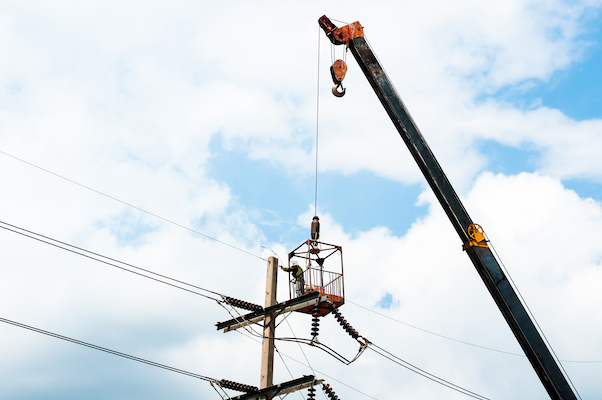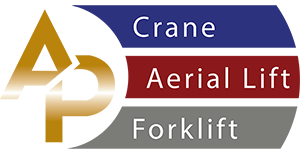Services
Aerial Lift TrainingForklift Operator Certification
Instructor Courses
Mobile Crane Operator Certification
Online Training
Crane Operator Training
Overhead Crane Training
Rigging and SignalPerson Training
All Purpose Crane Training offers crane operator training on-site or off-site. Providing National accredited crane operator certification meeting OSHA ANSI standards for crane operators to become certified.
1926.1401
1926.1402
1926.1403
1926.1404
1926.1405
1926.1406
1926.1407
1926.1408
1926.1409
1926.1410
1926.1411
1926.1412
1926.1413
1926.1414
1926.1415
1926.1416
1926.1417
1926.1418
1926.1419
1926.1420
1926.1421
1926.1422
1926.1423
1926.1424
1926.1425
1926.1426
1926.1427
1926.1428
1926.1429
1926.1430
1926.1431
1926.1432
1926.1433
1926.1434
1926.1435
1926.1436
1926.1437
1926.1438
1926.1439
1926.1440
1926.1441
1926.1442

Equipment operations in which any part of the equipment, load line, or load (including rigging and lifting accessories) is closer than the minimum approach distance under Table A of 1926.1408 to an energized power line is prohibited, except where the employer demonstrates that all of the following requirements are met:
- (a) The employer determines that it is infeasible to do the work without breaching the minimum approach distance under Table A of 1926.1408.
- (b) The employer determines that, after consultation with the utility owner/operator, it is infeasible to deenergize and ground the power line or relocate the power line.
- (c) Minimum clearance distance.
- (1) The power line owner/operator or registered professional engineer who is a qualified person with respect to electrical power transmission and distribution determines the minimum clearance distance that must be maintained to prevent electrical contact in light of the on-site conditions. The factors that must be considered in making this determination include, but are not limited to: conditions affecting atmospheric conductivity; time necessary to bring the equipment, load line, and load (including rigging and lifting accessories) to a complete stop; wind conditions; degree of sway in the power line; lighting conditions, and other conditions affecting the ability to prevent electrical contact.
- (2) Paragraph (c)(1) of this section does not apply to work covered by subpart V of this part; instead, for such work, the minimum clearance distances specified in 1926.950 Table V-1 apply. Employers engaged in subpart V work are permitted to work closer than the distances in 1926.950 Table V-1 where both the requirements of this section and 1926.952(c)(3)(i) or (ii) are met.
- (d) A planning meeting with the employer and utility owner/operator (or registered professional engineer who is a qualified person with respect to electrical power transmission and distribution) is held to determine the procedures that will be followed to prevent electrical contact and electrocution. At a minimum these procedures must include:
- (1) If the power line is equipped with a device that automatically reenergizes the circuit in the event of a power line contact, before the work begins, the automatic reclosing feature of the circuit interrupting device must be made inoperative if the design of the device permits.
-
(2) A dedicated spotter who is in continuous contact with the operator.
The dedicated spotter must: - (i) Be equipped with a visual aid to assist in identifying the minimum clearance distance. Examples of a visual aid include, but are not limited to: a line painted on the ground; a clearly visible line of stanchions; a set of clearly visible line-of-sight landmarks (such as a fence post behind the dedicated spotter and a building corner ahead of the dedicated spotter).
- (ii) Be positioned to effectively gauge the clearance distance.
- (iii) Where necessary use equipment that enables the dedicated spotter to communicate directly with the operator.
- (iv) Give timely information to the operator so that the required clearance distance can be maintained.
- (3) An elevated warning line, or barricade (not attached to the crane), in view of the operator (either directly or through video equipment), equipped with flags or similar high-visibility markings, to prevent electrical contact. However, this provision does not apply to work covered by subpart V of this part.
- (4) Insulating link/device.
- (i) An insulating link/device installed at a point between the end of the load line (or below) and the load.
- (ii) For work covered by subpart V of this part, the requirement in paragraph (d)(4)(i) of this section applies only when working inside the 1926.950 Table V-1 clearance distances.
- (iii) For work covered by subpart V of this part involving operations where use of an insulating link/device is infeasible, the requirements of 1910.269(p)(4)(iii)(B) or (C) may be substituted for the requirement in (d)(4)(i) of this section.
- (iv) Until [INSERT DATE 1 YEAR AND 90 DAYS AFTER PUBLICATION IN THE FEDERAL REGISTER], the following procedure may be substituted for the requirement in paragraph (d)(4)(i) of this section: all employees, excluding equipment operators located on the equipment, who may come in contact with the equipment, the load line, or the load must be insulated or guarded from the equipment, the load line, and the load. Insulating gloves rated for the voltage involved are adequate insulation for the purposes of this paragraph.
- (v) Until [INSERT DATE 3 YEARS AND 90 DAYS AFTER PUBLICATION IN THE FEDERAL REGISTER], the following procedure may be substituted for the requirement in (d)(4)(i) of this section:
- (A) The employer must use a link/device manufactured on or before [INSERT DATE 1 YEAR AND 90 DAYS AFTER PUBLICATION IN THE FEDERAL REGlSTER], that meets the definition of an insulating link/device, except that it has not been approved by a Nationally Recognized Testing Laboratory, and that is maintained and used in accordance with manufacturer requirements and recommendations, and is installed at a point between the end of the load line (or below) and the load; and
- (B) All employees, excluding equipment operators located on the equipment, who may come in contact with the equipment, the load line, or the load must be insulated or guarded from the equipment, the load line, and the load through an additional means other than the device described in paragraph (d)(4)(v)(A) of this section. insulating gloves rated for the voltage involved are adequate additional means of protection for the purposes of this paragraph.
- (5) Nonconductive rigging if the rigging may be within the Table A of 1926.1408 distance during the operation.
- (6) If the equipment is equipped with a device that automatically limits range of movement, it must be used and set to prevent any part of the equipment, load line, or load (including rigging and lifting accessories) from breaching the minimum approach distance established under paragraph (c) of this section.
- (7) If a tagline is used, it must be of the nonconductive type.
- (8) Barricades forming a perimeter at least 10 feet away from the equipment to prevent unauthorized personnel from entering the work area. In areas where obstacles prevent the barricade from being at least 10 feet away, the barricade must be as far from the equipment as feasible.
- (9) Workers other than the operator must be prohibited from touching the load line above the insulating link/device and crane. Operators remotely operating the equipment from the ground must use either wireless controls that isolate the operator from the equipment or insulating mats that insulate the operator from the ground.
- (10) Only personnel essential to the operation are permitted to be in the area of the crane and load.
- (11) The equipment must be properly grounded.
- (12) Insulating line hose or cover-up must be installed by the utility owner/operator except where such devices are unavailable for the line voltages involved.
- (e) The procedures developed to comply with paragraph (d) of this section are documented and immediately available on-site.
- (f) The equipment user and utility owner/operator (or registered professional engineer) meet with the equipment operator and the other workers who will be in the area of the equipment or load to review the procedures that will be implemented to prevent breaching the minimum approach distance established in paragraph (c) of this section and prevent electrocution.
- (g) The procedures developed to comply with paragraph (d) of this section are implemented.
- (h) The utility owner/operator (or registered professional engineer) and all employers of employees involved in the work must identify one person who will direct the implementation of the procedures. The person identified in accordance with this paragraph must direct the implementation of the procedures and must have the authority to stop work at any time to ensure safety.
- (i) [Reserved]
- (j) If a problem occurs implementing the procedures being used to comply with paragraph (d) of this section, or indicating that those procedures are inadequate to prevent electrocution, the employer must safely stop operations and either develop new procedures to comply with paragraph (d) of this section or have the utility owner/operator deenergize and visibly ground or relocate the power line before resuming work.
- (k) Devices originally designed by the manufacturer for use as a safety device (see 1926.1415), operational aid, or a means to prevent power line contact or electrocution, when used to comply with this section, must comply with the manufacturers procedures for use and conditions of use.
- (l) [Reserved]
- (m) The employer must train each operator and crew member assigned to work with the equipment in accordance with 1926.1408(g).
